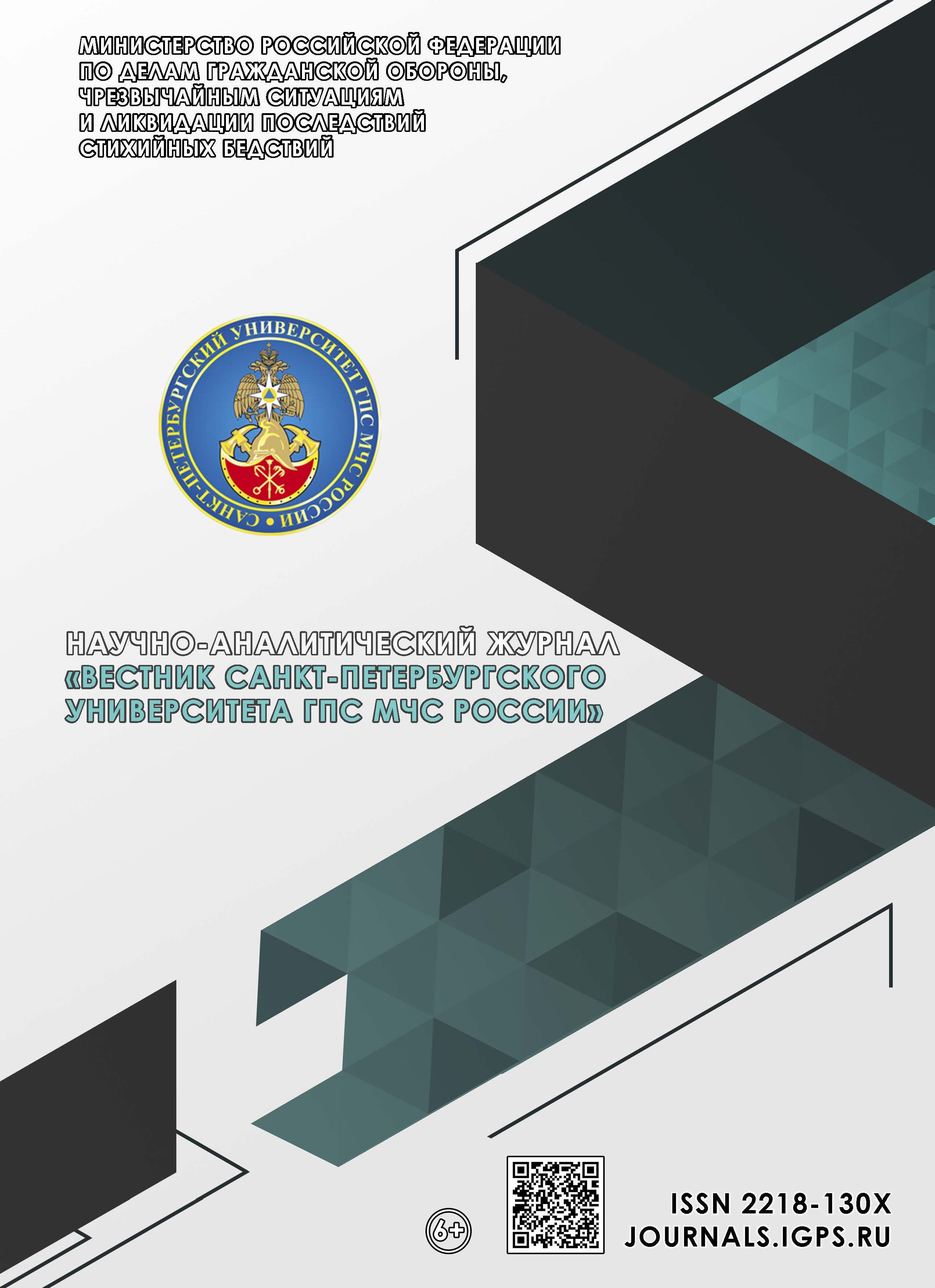Russian Federation
The subject of the article is modern fire extinguishing technologies based on compression foam. The purpose of the study is to study the means of obtaining and the prospects for using compression foam in fire fighting. Methods: analysis and synthesis, modeling. The results obtained indicate that compression foam has a number of advantages compared to water and conventional air-aspirated foam, so it can be used to extinguish fires in many industries and areas. A diagram of the production of compression foam is presented (the foam concentrate acts as a foaming agent) and a diagram of an autonomous installation for the production of compression foam. It is noted that one of the significant advantages of CAFS is the ability to create a finished product that matches a specific type of fuel or a specific situation. The characteristics of the SmartCAFS product have been defined. A typology of the use of compression foam depending on the type of incident is presented. The results of fire resistance tests of various foams are presented. It is concluded that fire suppression systems using compression foam have significant advantages, such as minimizing the spread of fire, the volume of water required to cover large areas, costs and placement, and the integration of CAFS with digital technologies.
foam, fire, compression, coating, flow, water, fuel, air
1. Shavaleev M.R. Poluchenie kompressionnoj peny ot motopomp dlya tusheniya lesnyh pozharov // Tekhnosfernaya bezopasnost'. 2020. № 4 (29). S. 102–105.
2. Primenenie kompressionnoj peny pri tushenii pozharov ob"ektov neftegazovogo kompleksa pri otricatel'nyh temperaturah / M.V. Aleshkov [i dr.] // Pozhary i chrezvychajnye situacii: predotvrashchenie, likvidaciya. 2020. № 1. S. 8–15.
3. Chenyu Wang, Hu Shi Carrageenan-vermiculite-dimethyl methyl phosphate ternary hybrid hydrogels for firefighting // Fire and Materials. 2022. № 47 (3). S. 12–19.
4. Experimental study on the fire combustioncharacteristcs of small-scale transformer oil pool fire / L. Jian-fei [et al.] // Fire Sci. Technol. 2019. № 26. P. 6–12.
5. Navrockij O.D., Kamlyuk A.N. Nauchno-obosnovannye trebovaniya k ustrojstvu i tekhnicheskim harakteristikam ustanovok generirovaniya kompressionnoj peny i metodika ih ispytanij // Vestnik Universiteta grazhdanskoj zashchity MCHS Belarusi. 2021. № 5 (1). S. 81–92.
6. Fire accident characteristics and fire extinguishing countermeasures of oil-immersed / C.L. Yalong [et al.] // Transformer, Safety and Environmental Engineering. 2020. № 39. P. 1645–1648.
7. Fedyaev V.D., Strugov A.O. Sovremennye tekhnologii tusheniya pozharov na ob"ektah energetiki // Problemy tekhnosfernoj bezopasnosti: materialy Mezhdunar. nauch.-prakt. konf. molodyh uchyonyh i specialistov. 2022. № 11. S. 100–105.
8. Aleshkov M.V., Dvoenko O.V. Ocenka vozmozhnosti ispol'zovaniya razlichnyh sredstv pozharotusheniya v vysotnyh zdaniyah // Pozharovzryvobezopasnost'. 2022. № 31 (4). S. 65–75.
9. Yuanliang B.S. Discussion on fire risk and rescue countermeasures of oil-immersed transformers of nuclear power plants // Electric Safety Technology. 2022. № 24. P. 66–69.
10. Fire-extinguishing performance and gas-phase pollution characteristics of different foam agents in extinguishing transformer oil pool fire / J.Q. Zhang [et al.] // J. Fire Sci. 2022. № 40. P. 463–478.
11. Xuhui Z.Y., Yueyong W. Application research of new foam fire extinguishing device based on hot oil fire of full size transformer. Beijing China. 2021. P. 5–15.
12. Lou M., Jia H., Lin Z. Study on fire extinguishing performance of different foam extinguishing agents in diesel pool fire // Results in Engineering. 2023. № 17. P. 67–72.
13. Poteryaev Yu.K., Miron'chev A.V., Oshchepkov A.M. Sravnenie effektivnosti kompressionnoj peny i peny nizkoj kratnosti AFFF // Pozhary i chrezvychajnye situacii: predotvrashchenie, likvidaciya. 2023. № 3. S. 32–38.
14. Cheng H., Tao C., Xue-cheng F. Experimental study on extinguishing whole surface spill fire of transformers by compressed air foam // Fire Sci. Technol. 2020.№ 39. R. 959–962.
15. Mobil'naya ustanovka polucheniya kompressionnoy peny dlya tusheniya pozharov / M.R. Shavaleev [i dr.] // Bezopasnost' zhiznedeyatel'nosti. 2019. № 2 (218). S. 49–52.
16. Dubocq F., Wang T., Yeung L.W. Characterization of the chemical contents of fluorinated and fluorine-free firefighting foams using a novel workflow combining nontargeted screening and total fluorine analysis // Environ. Sci. Technol. 2020. № 54. R. 245–254.
17. Hill C., Czajka A., Hazell G. Surface and bulk properties of surfactants used in fire-fighting // Colloid Interface Sci. 2018. № 530. R. 686–694.






